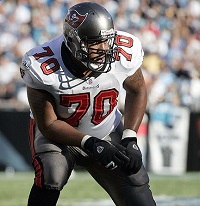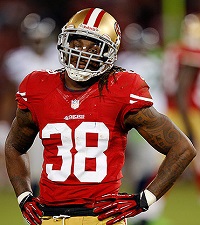[adsenseyu1]
With teams gearing up to play the dress rehearsal game, the one big name player still missing is S Jairus Byrd of the Buffalo Bills. Byrd is the lone Franchise player who has yet to sign a tender to become an active player in the NFL. From most reports on the situation there seems to be little movement in getting Byrd into uniform.
While I didn’t run the numbers for Byrd the way I might for others I think it’s safe to say he is one of the two or three best Safeties in the NFL and deserves to be paid right at the top of the position. The Buccaneers overpayment for Dashon Goldson probably pushed the asking price for Byrd even higher. Goldson received a five year contract worth $8.25 million a year with $18 million in solid guarantees and $25.5 million in injury guarantees and three year pay. The best player is actually Eric Weddle of the Chargers who comes in at $8 million a year, $19 million in full guarantees, and $25 million in the first three years.
Those are the numbers that Byrd is looking for, but the Franchise tag pays him only $6.916 million. One of the worries of signing the Franchise tender is that Byrd opens himself up to being tagged again in 2014. Often times the cost of the second tag, 120% of a players prior year’s salary, makes it prohibitive to tag a player two times in a row, however because this is a low cost position and because the Bills have what looks to be a reasonable cap situation in 2014, tagging Byrd remains a very real possibility.
The NFL puts a deadline on the team that Franchises a player to sign that player to a multiyear extension, a date which has long passed so both sides are locked into a one year contract. From the Bills perspective this creates a bargain situation. Had they signed him to an extension he would have received upwards of $20 million in guarantees. Now he only has $6.9. If they tag a second time they will only pay Byrd $15,215,200 in salary in 2013 and 2014. Goldson and Weddle earned $18 and $19 million respectively in the first two years of their contract.
It really only becomes the third time where tagging Byrd becomes cost prohibitive for the Bills. By that point in time Byrd will be 29. While that is the same age Goldson will be this year many teams will look at that as a decline year and in many cases simply not be interested in signing him.
The bottom line is because of the way the Franchise tag now operates, in which tender amounts are smoothed out, high end players at traditionally lower cost positions (Safety, Tight End, etc…) lose any leverage in negotiating a contract. That is what is happening with Byrd and why he will likely continue to maintain his position as long as possible.
So what is a fair solution at this stage of the game? Publically both sides say they want one another, but the options right now are limited because the two sides may only sign a one year agreement. However, the price and terms of that contract can be negotiated. The easiest solution would seem to be for the Bills to put a provision in Byrd’s contract that prohibits the use of the Franchise tag in 2014. This is not completely uncommon and would protect Byrd’s rights in 2014.
The other option would be for the Bills to show that they want Byrd and actually increase his salary. If the Bills are adamant about not prohibiting the use of the tag for fear of setting precedence for other free agents, they could agree to raise the price for Byrd to put his payouts closer to that of the high end of the market. While that may also set a bad precedent as well, if they are truly committed to keeping Byrd it is a fair option.
To accomplish this The Bills would give Byrd a raise of $1,266,000 in 2013. The one year contract would then be for a total of $8,182,000. If the Bills were to tag Byrd again his 2014 salary would then equal $9,818,400. That salary accomplishes two things. One it is high enough to where the Bills may consider not using it, in effect acting as the “no tag” provision Byrd wants. If they choose to use it, Byrd’s two year payout would be $18,000,400 which is exactly in line with where he should be had he signed a long term extension this year based on the Goldson and Weddle numbers. That is a good faith gesture by the Bills about their desire to keep Byrd in Buffalo.
Time is certainly running out for both sides. It is rare for a player to miss games but Byrd certainly seems pretty dug in on his stance right now. We will have to wait and see how the next two weeks unfold, but there are ways that the two sides should be able to find common ground to get him on the field in a Bills uniform.
[subscribe2]

